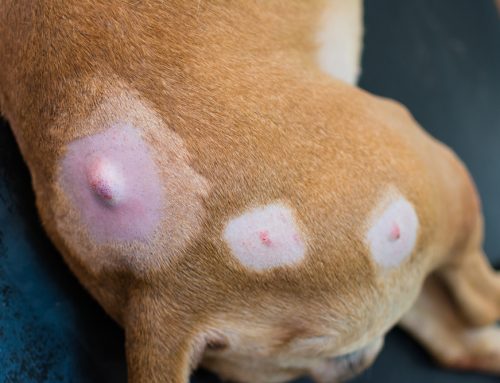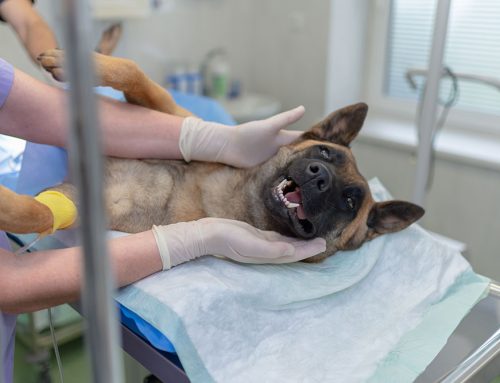Pets are commonly affected by degenerative joint disease (DJD), the most common type of arthritis, which can significantly decrease their quality of life. Our Burlington Veterinary Center team wants to help by providing information about arthritis and explaining management strategies that can decrease your pet’s pain, and increase their mobility.
Arthritis causes in pets
In a healthy joint, a smooth cartilage layer acts as a cushion between the bones, and joint fluid reduces friction inside the joint during movement. Certain conditions can cause inflammation inside the joint, causing the cartilage to deteriorate and reducing the joint fluid. This leads to pain during movement and a decreased range of joint motion. Conditions that contribute to DJD include:
- Age — As pets age, their joints experience more wear and tear,
- Breed and size — b
- Abnormal joint development — Certain developmental diseases, such as hip dysplasia, elbow dysplasia, and luxating patellas, predispose to DJD.
- Injuries — Pets with fractures, ligament or tendon damage, muscle injury, and joint infection, are at higher DJD risk.
- Body condition — Overweight and obese pets are at higher DJD risk. The added weight puts excess strain on their joints, and fat cells cause continuous low-grade inflammation throughout the body that exacerbates the joint damage.
- Illness — Certain diseases, such as Lyme disease and Rocky Mountain spotted fever, can cause joint inflammation and lead to DJD.
- Nutrition — Pets who are not fed appropriately during development can grow too fast, and be predisposed to DJD.
Arthritis signs in pets
Limping is an obvious sign that a pet is experiencing joint pain, but many pets exhibit more subtle signs, making the condition difficult to recognize, and an arthritic pet who goes undiagnosed for an extended period suffers needlessly. Signs include:
- Lethargy — Arthritic pets may be less willing to play, and may sleep more, especially during the day.
- Stiffness — You may notice that your pet seems stiff when they get up after a nap.
- Reluctance to jump — Arthritic pets may be reluctant to jump on and off furniture or in or out of the car.
- Reluctance to climb stairs — Your pet may be reluctant to go up and down the stairs, or they may navigate the stairs awkwardly, trying to avoid putting excess pressure on painful joints.
- Pain when handled — Arthritic pets may exhibit pain when you handle them or pick them up.
- Irritability — Your pet who is suffering constant joint pain may become more irritable.
- Inappropriate elimination — Arthritic cats frequently stop using their litter box, because they cannot navigate the high sides comfortably.
Arthritis diagnosis in pets
Diagnostics to test for arthritis include:
- Gait assessment — We will observe your pet’s gait, as well as their movements when they stand up and sit down, to look for any abnormalities.
- Palpation — We will palpate your pet’s joints, feeling for swelling and heat, and manipulate the joint to check for normal range of motion.
- X-rays — X-ray images can visually assess your pet’s joints.
- Drug trial — In some cases, we may put your pet on a drug trial to see if their activity level and demeanor changes.
- Blood tests — Blood tests may be performed to rule out tick borne diseases, or to see if your pet is a good drug trial candidate.
Arthritis treatment in pets
A multi-modal approach is typically recommended to manage an arthritic pet. Strategies include:
- Weight control — If your pet is overweight, we will devise a weight loss program to help them safely lose the excess weight.
- Activity modification — Low-impact, consistent exercise, such as leash walking, is good to build muscle and help stabilize the joint. High-impact exercises, such as running and jumping, can exacerbate pain and inflammation, and should be limited.
- Environmental modification — Improve your pet’s comfort inside your home by ensuring they have a soft, thick area to rest, ramps to help them access surfaces, rugs to avoid slippery floors, and raised food and water dishes.
- Rehabilitation exercises — Range of motion exercises, therapeutic exercises, and hydrotherapy can help improve joint mobility, and increase muscle mass and stamina.
- Alternative therapies — We may use alternative approaches, such as laser therapy and acupuncture, in conjunction with other treatment modalities, to help your arthritic pet.
- Pain medications — Nonsteroidal anti-inflammatories are commonly used to control pain in arthritic pets.
- Joint supplements — Joint supplements, including omega-3 fatty acids, chondroitin sulfate, and glucosamine, may help your pet’s joint health.
- Disease modulating agents — These products can be administered intramuscularly or directly in the joint to help decrease inflammation.
- Surgical management — Surgical intervention may be necessary to manage the condition.
Arthritis prevention in pets

Arthritis can’t always be prevented, but you can take these steps to decrease your pet’s risk:
- Keep your pet at a healthy weight — Calculate your pet’s daily energy requirements, and feed them appropriately to ensure they maintain an ideal weight.
- Exercise your pet consistently — Exercise your pet regularly to keep their muscles, tendons, and ligaments strong and healthy.
- Feed your pet the right food — Feed your young pet an appropriate food to ensure they don’t grow too fast, which could predispose them to certain developmental disorders.
Arthritis is a problematic, painful condition, but when diagnosed early, management strategies can help improve your pet’s quality of life. If your pet has started to slow down, contact our Fear Free team at Burlington Veterinary Center, so we can ensure they aren’t experiencing joint pain.







Leave A Comment